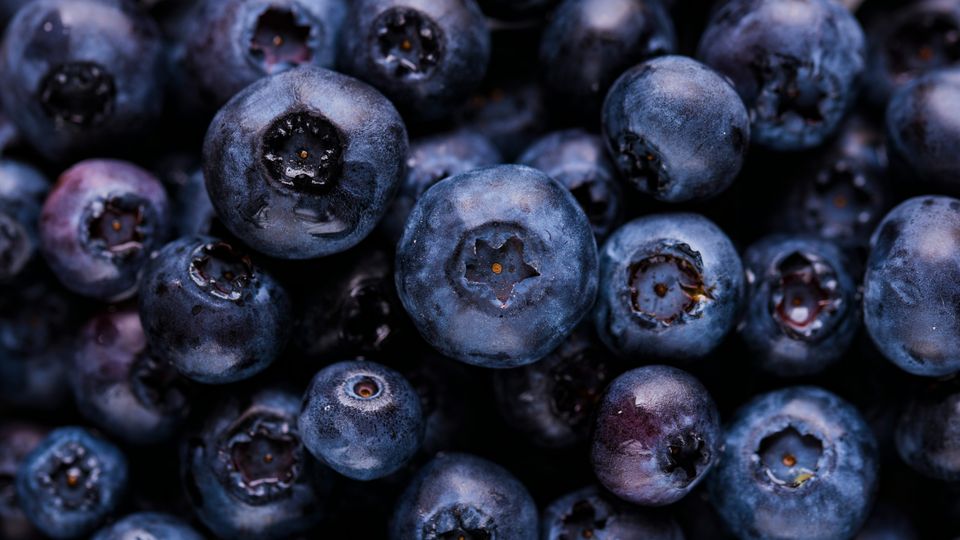Scientists Uncover How Blueberries Appear Blue
What color are blueberries? Correct answer: dark red.

Complete the form below to unlock access to ALL audio articles.
What color are blueberries? Correct answer: dark red.
It may sound wrong, but red is the primary pigment color found in the fruit’s skin; it only appears dark blue to our eyes.
How exactly? That’s what researchers at the University of Bristol wanted to find out.
After closely studying the skin of the fruit, the researchers observed that its blue color is instead created by a layer of surface wax made up of miniature structures that scatter blue and ultraviolet (UV) light.
Under the blue skin
In their study, published in Science Advances, the research team examined the skin of the blueberries using scanning electron microscopy.
They found that the skin’s chromatic blue-UV reflectance arises from the interaction of light with the randomly arranged crystal structures of the skin wax. This is what gives blueberries their blue appearance to humans and blue-UV to birds.
Most plants are coated in a thin layer of wax, which serves as a hydrophobic barrier. Until now, however, researchers did not know how important the structure was for visible coloration.
“The blue of blueberries can’t be ‘extracted’ by squishing – because it isn’t located in the pigmented juice that can be squeezed from the fruit,” said Rox Middleton, a research fellow at the University of Bristol. “That was why we knew that there must be something strange about the color.”
“So we removed the wax and re-crystallized it on card and in doing so we were able to create a brand new blue-UV coating.”
This ultra-thin blue layer is around two microns thick and occurs in fruits of the same color, such as damsons, sloes and juniper berries.
The layer has the potential to be copied and engineered, according to Middleton.
The layer could lead to a more sustainable, biocompatible and even edible UV and blue-reflective paint.
“It shows that nature has evolved to use a really neat trick, an ultrathin layer for an important colorant,” added Middleton.
“It was really interesting to find that there was an unknown coloration mechanism right under our noses, on popular fruits that we grow and eat all the time,” Middleton continued. “It was even more exciting to be able to reproduce that color by harvesting the wax to make a new blue coating that no-one’s seen before.
“Building all that functionality of this natural wax into artificially engineered materials is the dream!”
Reference: Middleton R, Tunstad SA, Knapp A, et al. Self-assembled, disordered structural color from fruit wax bloom. Sci. Adv. 2024. doi:10.1126/sciadv.adk4219
This article is a rework of a press release issued by the University of Bristol. Material has been edited for length and content.


